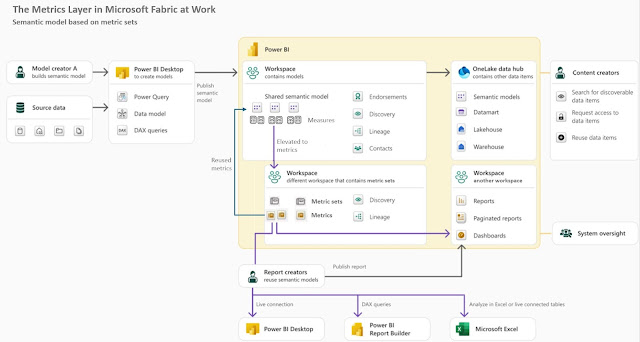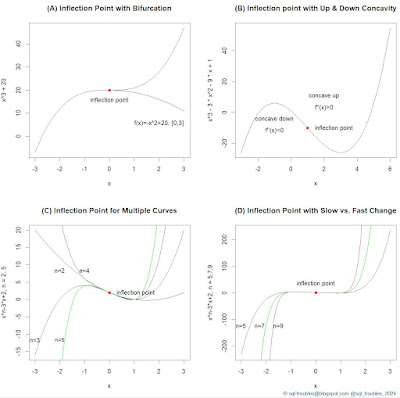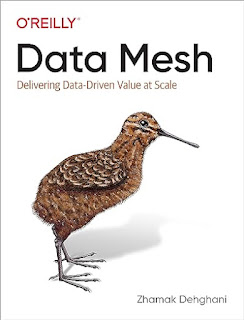"Another myth is that we shall have a single source of truth for each concept or entity. […] This is a wonderful idea, and is placed to prevent multiple copies of out-of-date and untrustworthy data. But in reality it’s proved costly, an impediment to scale and speed, or simply unachievable. Data Mesh does not enforce the idea of one source of truth. However, it places multiple practices in place that reduces the likelihood of multiple copies of out-of-date data." (Zhamak Dehghani, "Data Mesh: Delivering Data-Driven Value at Scale", 2021)
"Data Mesh attempts to strike a balance between team autonomy and inter-term interoperability and collaboration, with a few complementary techniques. It gives domain teams autonomy to have control of their local decision making, such as choosing the best data model for their data products. While it uses the computational governance policies to impose a consistent experience across all data products; for example, standardizing on the data modeling language that all domains utilize." (Zhamak Dehghani, "Data Mesh: Delivering Data-Driven Value at Scale", 2021)
"Data mesh is a solution for organizations that experience scale and complexity, where existing data warehouse or lake solutions have become blockers in their ability to get value from data at scale and across many functions of their business, in a timely fashion and with less friction." (Zhamak Dehghani, "Data Mesh: Delivering Data-Driven Value at Scale", 2021)
"Data Mesh must allow for data models to change continuously without fatal impact to downstream data consumers, or slowing down access to data as a result of synchronizing change of a shared global canonical model. Data Mesh achieves this by localizing change to domains by providing autonomy to domains to model their data based on their most intimate understanding of the business without the need for central coordinations of change to a single shared canonical model." (Zhamak Dehghani, "Data Mesh: Delivering Data-Driven Value at Scale", 2021)
"Data mesh [...] reduces points of centralization that act as coordination bottlenecks. It finds a new way of decomposing the data architecture without slowing the organization down with synchronizations. It removes the gap between where the data originates and where it gets used and removes the accidental complexities - aka pipelines - that happen in between the two planes of data. Data mesh departs from data myths such as a single source of truth, or one tightly controlled canonical data model." (Zhamak Dehghani, "Data Mesh: Delivering Data-Driven Value at Scale", 2021)
"Data mesh relies on a distributed architecture that consists of domains. Each domain is an independent unit of data and its associated storage and compute components. When an organization contains various product units, each with its own data needs, each product team owns a domain that is operated and governed independently by the product team. […] Data mesh has a unique value proposition, not just offering scale of infrastructure and scenarios but also helping shift the organization’s culture around data," (Rukmani Gopalan, "The Cloud Data Lake: A Guide to Building Robust Cloud Data Architecture", 2022)
"Data has historically been treated as a second-class citizen, as a form of exhaust or by-product emitted by business applications. This application-first thinking remains the major source of problems in today’s computing environments, leading to ad hoc data pipelines, cobbled together data access mechanisms, and inconsistent sources of similar-yet-different truths. Data mesh addresses these shortcomings head-on, by fundamentally altering the relationships we have with our data. Instead of a secondary by-product, data, and the access to it, is promoted to a first-class citizen on par with any other business service." (Adam Bellemare,"Building an Event-Driven Data Mesh: Patterns for Designing and Building Event-Driven Architectures", 2023)
"Data mesh architectures are inherently decentralized, and significant responsibility is delegated to the data product owners. A data mesh also benefits from a degree of centralization in the form of data product compatibility and common self-service tooling. Differing opinions, preferences, business requirements, legal constraints, technologies, and technical debt are just a few of the many factors that influence how we work together." (Adam Bellemare, "Building an Event-Driven Data Mesh: Patterns for Designing and Building Event-Driven Architectures", 2023)
"The data mesh is an exciting new methodology for managing data at large. The concept foresees an architecture in which data is highly distributed and a future in which scalability is achieved by federating responsibilities. It puts an emphasis on the human factor and addressing the challenges of managing the increasing complexity of data architectures." (Piethein Strengholt, "Data Management at Scale: Modern Data Architecture with Data Mesh and Data Fabric" 2nd Ed., 2023)
"A data mesh splits the boundaries of the exchange of data into multiple data products. This provides a unique opportunity to partially distribute the responsibility of data security. Each data product team can be made responsible for how their data should be accessed and what privacy policies should be applied." (Aniruddha Deswandikar,"Engineering Data Mesh in Azure Cloud", 2024)
"A data mesh is a decentralized data architecture with four specific characteristics. First, it requires independent teams within designated domains to own their analytical data. Second, in a data mesh, data is treated and served as a product to help the data consumer to discover, trust, and utilize it for whatever purpose they like. Third, it relies on automated infrastructure provisioning. And fourth, it uses governance to ensure that all the independent data products are secure and follow global rules."(James Serra, "Deciphering Data Architectures", 2024)
"At its core, a data fabric is an architectural framework, designed to be employed within one or more domains inside a data mesh. The data mesh, however, is a holistic concept, encompassing technology, strategies, and methodologies." (James Serra, "Deciphering Data Architectures", 2024)
"It is very important to understand that data mesh is a concept, not a technology. It is all about an organizational and cultural shift within companies. The technology used to build a data mesh could follow the modern data warehouse, data fabric, or data lakehouse architecture - or domains could even follow different architectures." (James Serra, "Deciphering Data Architectures", 2024)
"To explain a data mesh in one sentence, a data mesh is a centrally managed network of decentralized data products. The data mesh breaks the central data lake into decentralized islands of data that are owned by the teams that generate the data. The data mesh architecture proposes that data be treated like a product, with each team producing its own data/output using its own choice of tools arranged in an architecture that works for them. This team completely owns the data/output they produce and exposes it for others to consume in a way they deem fit for their data." (Aniruddha Deswandikar,"Engineering Data Mesh in Azure Cloud", 2024)
"With all the hype, you would think building a data mesh is the answer to all of these 'problems' with data warehousing. The truth is that while data warehouse projects do fail, it is rarely because they can’t scale enough to handle big data or because the architecture or the technology isn’t capable. Failure is almost always because of problems with the people and/or the process, or that the organization chose the completely wrong technology." (James Serra, "Deciphering Data Architectures", 2024)















